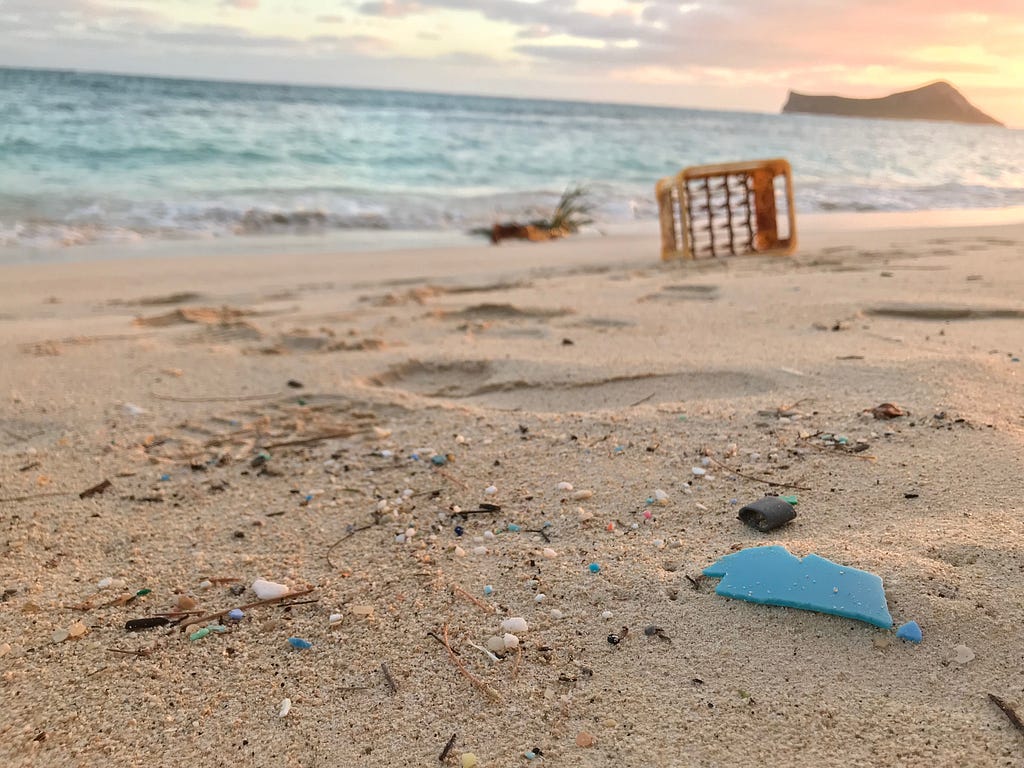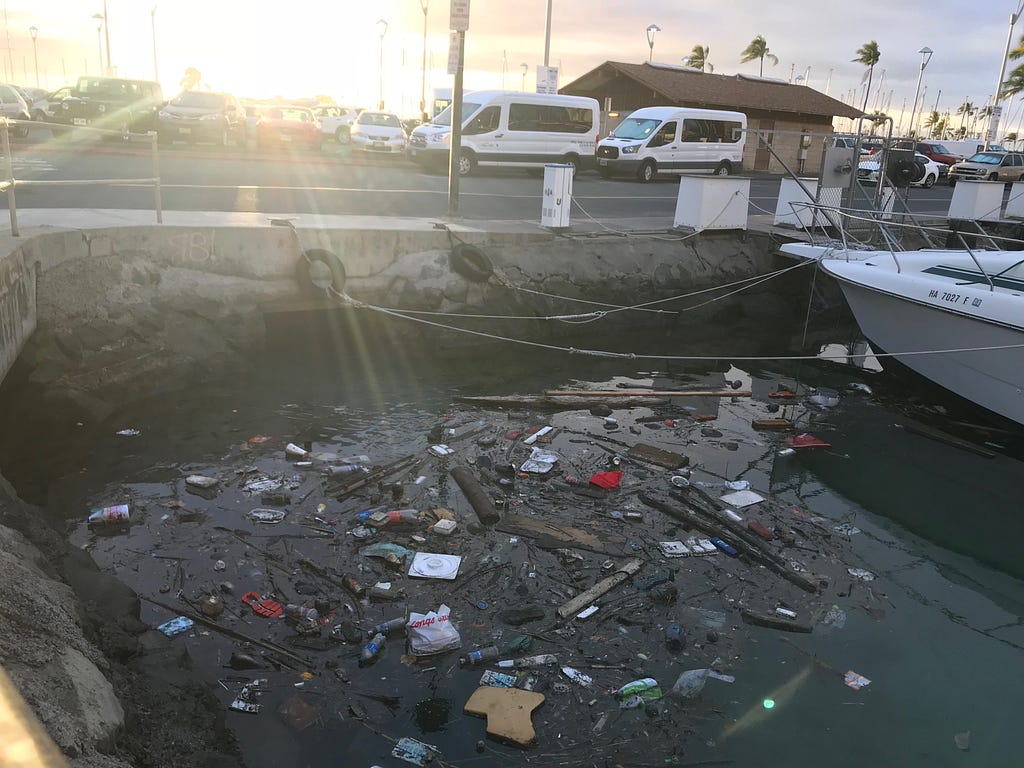Our trash is washing up on a Hawaiian beach, or ingested by the seafood we eat. Think about that.

It’s the most beautiful beach we know. Turquoise waters, fine golden sand, little tourist traffic. As we catch the mesmerizing sunrise, I can’t help but notice the debris strewn across this East-facing beach on the island of O’ahu.

Some of the items are clearly recognizable. A tub plug, part of a comb or toothbrush. Others have been reduced to mere colorful specks of plastic over time by the thrashing of the waves. These were not trash from visitors. These washed up on the beach from the ocean!
This is not a new problem. You may have heard of the Garbage Patch in the Pacific Ocean. Due to the ocean currents, the eastern shores are the most vulnerable to the plastic invasion and the Big Island apparently has the worst of it.
Why do I care?
You may have already seen videos such as this ad by Zooey Deschanel or the BBC special “How much plastic do you eat?” which estimates that a garbage truck of plastic is dumped into the ocean every minute! And these little pieces make their way into the seafood we eat. If you eat mussels, you’ve eaten plastic.
Why is there so much plastic in the ocean?
Mismanaged waste disposal is responsible for the majority of trash in the ocean. Here are a few articles that go into more detail on the problem.
- 10 Things You're Not Doing (But Should) To Help The Ocean
- The Oceans Are Drowning In Plastic -- And No One's Paying Attention
What is being done?
- Annual beach cleanups are scheduled and coordinated in Hawaii.
- Some hotels no longer serve drinks with plastic straws.
- Hawaii is trying to ban styrofoam food containers.
- Meanwhile, the Seychelles have put a ban on plastic.
How can I reduce my use of plastic?
- RECYCLE if your town supports it.
- Opt for glass instead of plastic containers when shopping for spices, juices, etc if you can.
- Bring your own reusable grocery bags.
- Opt for paper or biodegradable alternatives to plastic straws, cups, plates, silverware.
- Bring a reusable water bottle instead of buying plastic bottles.
How can I reduce the amount of trash I create?

- DO NOT LITTER the beach, the harbour, the streets. Use garbage cans and make sure your garbage is securely in the can. Mismanaged waste disposal is responsible for the majority of trash in the ocean.
- Make sure your garbage bags are closed securely to avoid littering during transportation.
- Find out what your city can recycle and recycle as much as possible.
- If you have to use disposable food containers, use recyclable ones and make sure to recycle properly.
- Avoid purchasing items with excessive wrapping material.
- Make your own compost.
- Opt for detergents that come in recyclable or biodegradable containers.
- Use a Diva Cup instead of tampons/pads.
- Urge your politicians to regulate the use of plastic
Thank you
Thank you for reading and doing your part in reducing trash and reducing your use of plastics :) Below is a picture of shells collected on a single beach in O’ahu. The ocean is a beautiful ecosystem. It would be a shame to give it up for plastic convenience.

